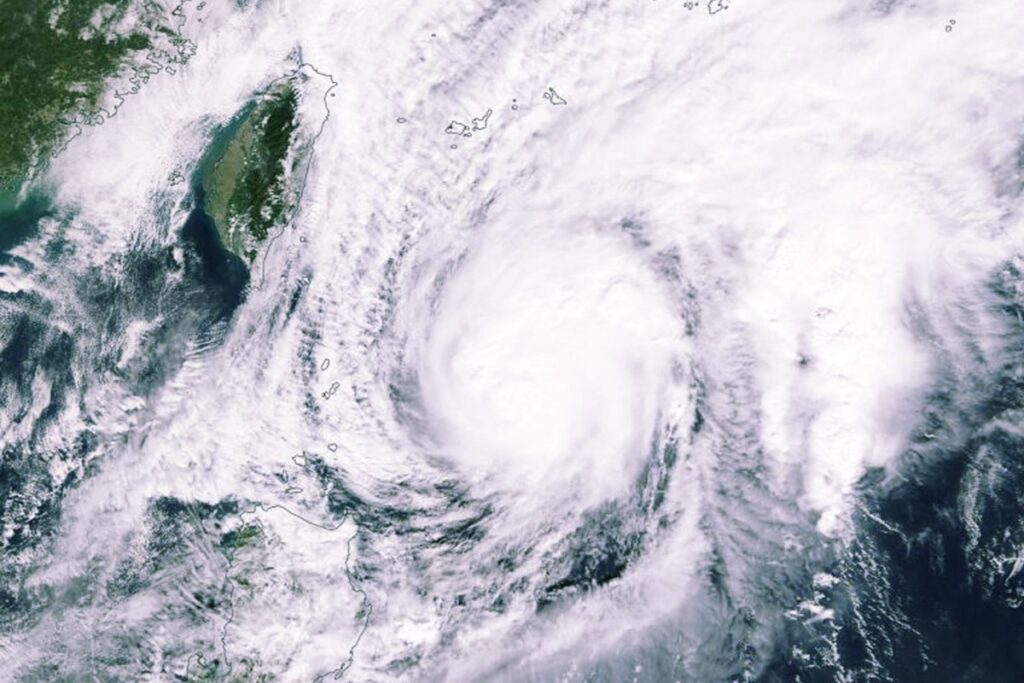Typhoon Fung-wong moved out of the northwestern Philippines on Monday, Nov. 10, 2025, after unleashing torrential rain and fierce winds that triggered floods, landslides, and extensive infrastructure damage across Luzon. Authorities reported at least eight deaths, with officials continuing to verify casualty figures as access improves to isolated communities. The storm displaced more than 1.4 million people, many of whom crowded into emergency shelters as neighborhoods were inundated or cut off by debris.
Emergency agencies said the cyclone’s passage left entire provinces without power and severed road links in multiple regions, complicating rescue and relief efforts. While early preparedness measures mitigated some risk, the storm’s breadth and speed still overwhelmed local defenses in riverine and coastal zones. Images from affected districts showed residents wading through chest-high water, rescuers ferrying families to higher ground, and workers clearing toppled trees from blocked highways.
Mass Evacuations And Rapid Response Across Luzon
Officials ordered large-scale pre-emptive evacuations as the cyclone accelerated toward landfall, moving hundreds of thousands out of danger zones near coastlines, flood plains, and slopes susceptible to landslides. By the time the typhoon’s core crossed the eastern seaboard, more than 1 million people had been moved to safety, according to national and local disaster management offices. Commercial air travel and sea transport were widely suspended, with hundreds of flights canceled and vessels barred from leaving ports. Schools and government offices in high-risk areas were closed to reduce exposure.
Energy and communications interruptions compounded the crisis. Utility crews worked to restore service after transmission lines were felled by sustained winds and gusts in excess of 115 mph (185 km/h), while mobile networks experienced outages in low-lying municipalities. Relief agencies prioritized emergency food, water, and medical support for evacuees and residents sheltering in place, focusing on provinces where river systems rapidly crested following hours of intense rainfall.
Taiwan Braces As Fung-wong Tracks Northward
Although weakening after crossing the Philippine landmass, Fung-wong maintained a large rain field while moving north toward Taiwan. Authorities in Taipei and coastal counties activated disaster protocols, ordered targeted evacuations, and prepared to suspend some services if wind and rain intensified as forecast. Meteorological guidance warned of outer rain bands capable of producing flash floods, localized landslides, and dangerous storm surges along exposed shorelines as the system approached.
Forecasters said gradual weakening was likely over the next day as the cyclone encountered less favorable environmental conditions. Even so, officials cautioned that peripheral hazards, for example prolonged downpours on already saturated ground, could still disrupt transport and power in parts of northern Luzon and Taiwan’s mountainous interior. Authorities urged residents to heed advisories and avoid waterways and unstable slopes until the system’s residual bands pass.
Successive Storms Test Response Capacity And Recovery
Fung-wong’s arrival came just days after Typhoon Kalmaegi, which earlier battered parts of the archipelago and strained response capacity. The back-to-back events left emergency stocks thin in some localities and forced redeployment of personnel across multiple provinces. Analysts noted that repeated land-falling storms within a short window heighten compound risks: damaged levees, saturated soils, and weakened infrastructure, can magnify the impacts of subsequent systems. Philippine authorities said they would maintain heightened disaster readiness as cleanup begins and river levels remain elevated.
Disaster officials emphasized the importance of early evacuation, improved power grid resilience, and clearer flood-plain zoning as communities begin assessments. With at least eight fatalities, widespread power loss, and over 1.4 million displaced, the priority in the near term is restoring electricity, reopening key roads, and returning evacuees home where safe. In parallel, health teams are monitoring evacuation centers for water-borne disease risks amid continued rainfall in some districts. Visuals from Navotas and Quezon City showed cleanup underway as residents reinforced homes and retrieved belongings.


